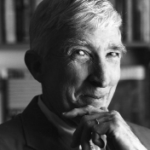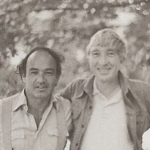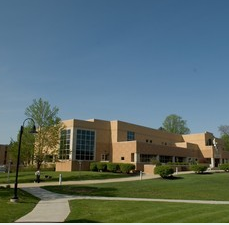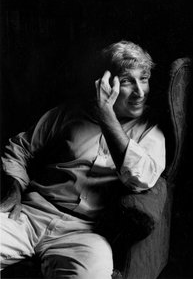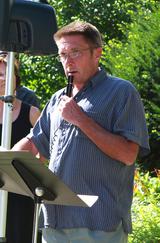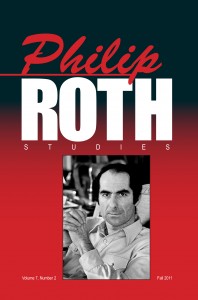 Former Kansas City Star book review editor John Mark Eberhart interviewed John Updike on or around October 24, 2008 in conjunction with the publication of The Widows of Eastwick. An article based on the interview appeared in the Star, but not until January 4, 2009. That article was reprinted in Pop Matters on January 7, 2009. However, the full Q & A that was the basis for the article has never appeared anywhere. We print it here by permission of Mr. Eberhart, with gratitude.
Former Kansas City Star book review editor John Mark Eberhart interviewed John Updike on or around October 24, 2008 in conjunction with the publication of The Widows of Eastwick. An article based on the interview appeared in the Star, but not until January 4, 2009. That article was reprinted in Pop Matters on January 7, 2009. However, the full Q & A that was the basis for the article has never appeared anywhere. We print it here by permission of Mr. Eberhart, with gratitude.
JME: I was a little surprised you decided to revisit your witches from “The Witches of Eastwick.” But of course you’ve revisited Henry Beck and, most famously, Rabbit Angstrom. Anyway, why these characters, and why now?
JU: For lack of a better idea, basically. The first sequel to “Rabbit, Run” came about because I’d wasted a lot of time doing research on President James Buchanan and I owed the world, I came to feel, a novel. The best thing I could think of was, “I wonder how Harry Angstrom is doing now?” “Rabbit, Run” had been left up in the air. So there was an excuse there, and I discovered it’s fun to write a sequel. It gives you a grip on time as it possesses the characters. Also, there’s a certain layered richness that you rightly or wrongly imagine as you work on a sequel or even a sequel to a sequel!
I never meant to write a sequel to “The Witches of Eastwick,” but the book was more of a commercial success than my books usually are. It sold well enough, and they made a movie of it. The movie, although attractive in its cast and its scenery, basically distorted or ignored the book itself. The main events of the plot as I conceived it was that the witches managed to put enough of a spell on one of the men in the town that he beat his wife to death and committed suicide, creating two orphans, and one of these became a kind of assistant witch, and she also was eliminated by a spell. Anyway, none of that plot got (in the movie).” Continue reading →
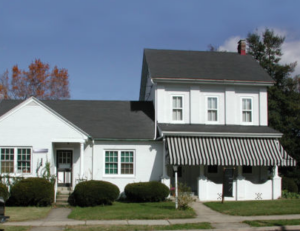 Today was the closing for the sale of the John Updike childhood home at 117 Philadelphia Avenue in Shillington, Pa., and after a long process The John Updike Society now officially owns the building and property. The eventual sale price—reduced because of needed safety-issue repairs and a furnace that the home inspector pronounced “on its last leg”—was $180,000, rather than the $200,000 original price.
Today was the closing for the sale of the John Updike childhood home at 117 Philadelphia Avenue in Shillington, Pa., and after a long process The John Updike Society now officially owns the building and property. The eventual sale price—reduced because of needed safety-issue repairs and a furnace that the home inspector pronounced “on its last leg”—was $180,000, rather than the $200,000 original price. Today was the closing for the sale of the John Updike childhood home at 117 Philadelphia Avenue in Shillington, Pa., and after a long process The John Updike Society now officially owns the building and property. The eventual sale price—reduced because of needed safety-issue repairs and a furnace that the home inspector pronounced “on its last leg”—was $180,000, rather than the $200,000 original price.
Today was the closing for the sale of the John Updike childhood home at 117 Philadelphia Avenue in Shillington, Pa., and after a long process The John Updike Society now officially owns the building and property. The eventual sale price—reduced because of needed safety-issue repairs and a furnace that the home inspector pronounced “on its last leg”—was $180,000, rather than the $200,000 original price.
